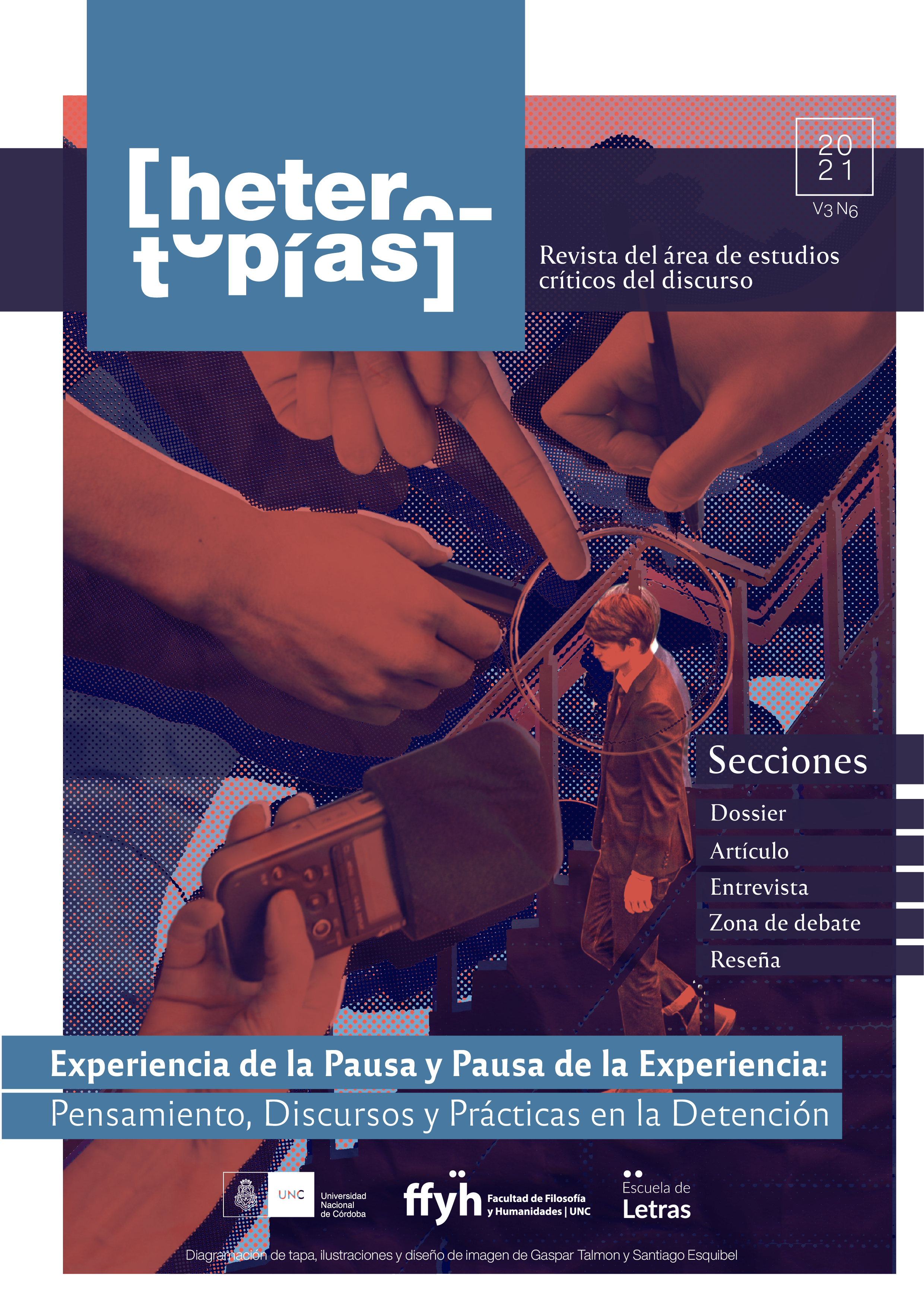Action and detention: notes for the study of the popular actor in Argentina and Mexico
Main Article Content
Abstract
The purpose of this article is to develop some key concepts for the comparative study of popular Argentine and Mexican actors within what we call the Revolutionary Model of Periodization. It is a way of thinking of popular actors as producers (as opposed to what we call actors creators) and of putting them in relation to two fundamental categories, “tierra” y “mugre”, closely linked to detention and to a particular way of conceiving time.
Downloads
Article Details

This work is licensed under a Creative Commons Attribution-NonCommercial-ShareAlike 4.0 International License.
Those authors who have publications with this journal, accept the following terms: Those authors who have publications with this journal, accept the following terms:
a. The authors will keep their copyright and guarantee to the journal the right of first publication of their work, which will be simultaneously subject to the Creative Commons Attribution - Non-Commercial - Share Alike (by-nc-sa) Attribution License; no commercial use of the original work or any derivative works is allowed, the distribution of which must be done with a license equal to the one that regulates the original work.
b. Authors may adopt other non-exclusive license agreements for the distribution of the published version of the work (e.g., deposit it in an institutional telematic archive or publish it in a monographic volume) provided that the initial publication in this journal is indicated.
c. Authors are allowed and recommended to disseminate their work through the Internet (e.g. in institutional telematic archives or on their website) before and during the submission process, which may lead to interesting exchanges and increase the number of citations of the published work. (See The effect of open access).
How to Cite
References
Benjamin, W. (1989a). Experiencia y pobreza. EnBenjamin W. Discursos interrumpidos I. (165-173). Madrid: Taurus.
Benjamin, W. (1989b). Tesis de filosofía de la historia. En Benjamin W. Discursos interrumpidos I. (175-191). Madrid: Taurus.
Benjamin, W. (1991). La enseñanza de lo semejante. En Benjamin. W. Para una crítica de la violencia y otros ensayos. Iluminaciones IV. (pp. 85-89). Madrid: Alfaguara.
Benjamin, W. (2002). El autor como productor. En Benjamin, W. Ensayos. Tomo V. (pp. 111-129).Madrid: Editora Nacional.
Benjamin, W. (2002b). ¿Qué es el teatro épico? (Primera versión). En Benjamin, W. Ensayos. Tomo V. (pp. 7-19).Madrid: Editora Nacional.
Catalán, A. (2002). “Producción de sentido actoral”. Teatro XXI, 12 (pp. 15-20).
Deleuze, G. (2009). La imagen-tiempo. Buenos Aires: Paidós.
Deleuze, G. (2017). Cine I. Bergson y las imágenes. Buenos Aires: Cactus
Deleuze, G. (2018). Cine III. Verdad y tiempo. Potencias de lo falso. Buenos Aires: Cactus.
Deleuze, G. y Guattari, F. (2004). Mil mesetas. Valencia: Pre-Textos.
Ferreyra, S. (2019). Estética de lo inefable. Hacia una genealogía materialista del teatro argentino. Los Polvorines: Universidad Nacional de General Sarmiento.
Ferreyra. S. y Rodríguez, M. (en prensa). El actor como productor: hacia un análisis materialista de la actuación en Buenos Aires. Apuntes de teatro, 143.
García Brunelli, O. (2015). La cuestión del fraseo en el tango. Zama, 7.
Gonzalez, M. (2010). La mugre en el tango. Punto tango, 46.
Lapoujade, D. (2016). Deleuze. Los movimientos aberrantes. Buenos Aires: Cactus.
Monjeau, F. y Filipelli, R. (2006). Fue lindo mientras duró. Contribuciones a una crítica del tango. Punto de Vista, 86.
Mosivais, C. (1992). Las mitologías del cine mexicano. Revista Inter Medios, 2.
Nietzsche, F. (2008). La genealogía de la moral.Buenos Aires: Alianza Editorial.
Nietzsche, F. (2001). La gaya ciencia. Madrid: Akal.
Pelinsky, R. (2000). Invitación a la etnomusicología. Quince fragmentos y un tango. Madrid: Akal.
Rodríguez, M. (2015). El actor nacional argentino y el cómico mexicano: hacia un modelo revolucionario de periodización. En Sureda-Cagliani, S. (dir.). Representaciones estéticas en Argentina y en el Río de la Plata siglos XIX, XX, XXI. Política, fiestas y excesos. Perpignan: Presses Universitaires de Perpignan.
Russo, F. (2011). El tango cantado. Una lectura acerca del canto en la Escuela Gardeliana. Buenos Aires: Corregidor.
Svampa, M. (1994). El dilema argentino: civilización o barbarie. De Sarmiento al revisionismo peronista. Buenos Aires: El cielo por asalto.
